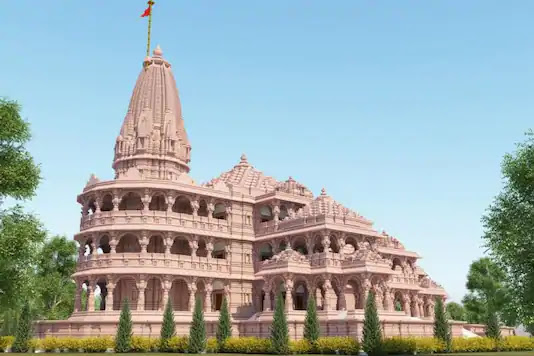A significant number of Muslims across the world celebrated as the Taliban took over the Presidential palace in Kabul. Some quietly, some not so. I have deliberately used the adjective ‘significant’ here, since the real numbers would never be known openly. But enough to suggest that there are far many sympathizers of the Taliban globally apart from the Pakistani institution, spread far and wide from North America to Europe, Africa, South Asia and of course the middle east. Ofcourse not every Muslim is a supporter and there indeed are those other 'significant' who abhor the ideology of fundamentalism and extremism. Unfortunately they never seem to be on the winning side irrespective of the numbers. A vast majority of sympathizers do not endorse the Taliban way of life. They, nevertheless, are celebrating. There are two broad streams of thoughts, not necessarily distinct that find jubilation in the Taliban victory. One stream arises from the seeming dislike of the western world for meddling and messing up with the Islamic world. So, any such win is treated as a revenge against their atrocities and hence morally justified. The other is the belief in the eventual rise and Islamic takeover of the world (Shariah) which doesn’t need a moral justification. So yes- Islamists from diverse streams and especially fundamentalists are having a field day after the takeover. Something akin to 9/11 or the ascent of the ISIS. Not to mention the Pakistani leadership is in seventh heaven! It is my firm belief that this victory would lead to a fundamental shift in the world order in years to come -for better or for worse. Only time will tell if this serves as a mega booster for Islamic terrorism or accelerates the process of its eventual demise.
Well to their credit, the Taliban
won – handsomely. That they would eventually capture Kabul was widely anticipated
few months since US decision to withdraw. The fact that Kabul fell so early came
as a surprise to many. A lot of chatter is being generated about the near
surrender and debacle of institution called the Afghanistan Defense Force. The US
had poured in 83 billion dollars to setup the Afghan National Defense force. Something
that couldn’t hold fort against the Taliban onslaught for more than a fortnight.
The speed at which the Taliban moved once the US forces began to return shows
that they fully knew the strengths (or lack of) and capabilities of the Afghanistan
army. A good use of propaganda machinery, leveraging the institutional weakness
of the opponents, striking deals with local warlords coupled with sound
strategy and of course the wisdom and intelligence of big brother Pakistan have
played a major role in Taliban’s win. Not to mention, they do have the tacit
backing of big powers – Russia and possibly China to be emboldened enough to
capture Kabul without worrying about international ramifications.
There is a lot of anger against the
USA for pulling out and especially the timing and manner of pullout. And yes,
the US certainly takes its share or blame for the outcome. But is the US really
to take the entire blame? Let’s look at the facts. First and foremost, the US
defense forces must be congratulated for successfully keeping the Taliban at
bay for 20 long years! How difficult a task it has been, could be gauged from
the events of past couple of weeks. To control and maintain a distant territory
amidst hostile surroundings and a failed nation state that plays both sides- is
not an easy task. The US successfully managed to maintain considerable control
over Afghanistan while its forces controlled the ground. However, as President
Biden said, it was never America’s responsibility to defend Afghanistan. In his
own words, American soldiers should not be fighting a war that the Afghans are
not fighting for themselves. There never was and would have been a good time
for retreat. The US entered Afghanistan since the then Taliban leadership was
sheltering the Al Qaeda. With the then Taliban leadership toppled, and the Al
Qaeda leadership eliminated, it was a matter of time before the US pulled the
plug. It still dragged for another decade or more with consecutive presidents
making clear the intent to withdraw but eventually dragging their feet. Many,
especially in India are criticizing Biden for the decision citing his liberal credentials.
However, the decision was made by Trump with Biden fixing a timeframe for
withdrawal. Irrespective of when the US withdrew,
the outcome would have been what it is today. The sad part however is not one
responsible power or set of powers stepped in to take responsibility when the
US decided to move out. While it is prudent for every nation including India to
take decisions in their national interests, it would be paradoxical to criticize
the US when they do the same! However, as mentioned earlier, even if a coalition
of forces had stepped in, the result would still have been the same, albeit a
few years later. We will dwell more on the reasons and consequences in the next
part of this writeup.
As an immediate after effect, Taliban ruled Afghanistan joins the axis of China, Pakistan with varying involvement of Russia, Iran, and Turkey- all of whom have stake in Afghanistan. As far as India is concerned, it is certainly a setback for the 20 plus years of strategic investment in a friendly country. While it will be prudent to maintain some level of diplomatic relations, the fact that Pakistan and China are deeply involved implies that India will remain out of the door for the near future. A setback indeed. The best the Indian leadership would do in the near term is to keep the Taliban quietly engaged and minimize the nuisance and wait for the tide to turn. Which it surely will. It’s a game of patience after all. The Pakistanis waited for 20 years. Now its our turn.
To be continued....
